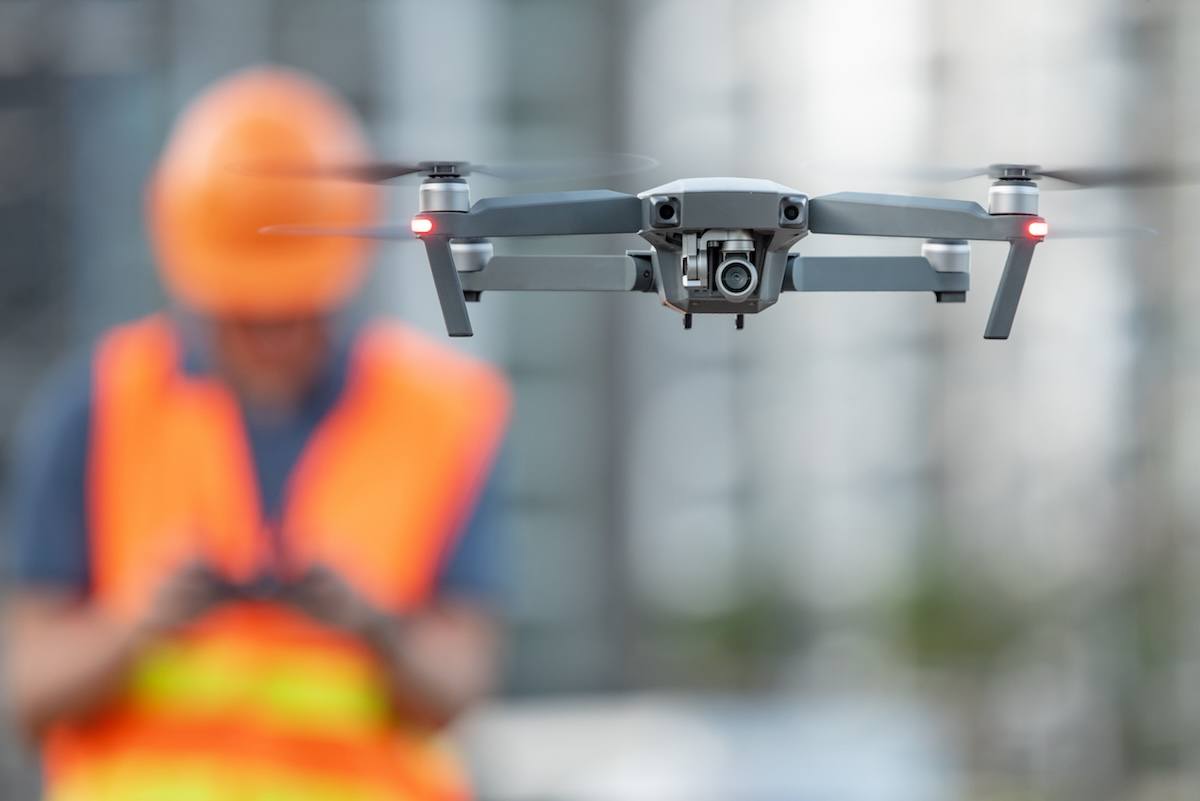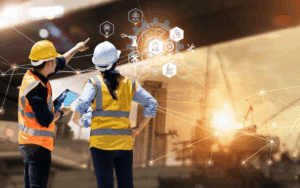The construction industry has long been associated with high-risk environments where worker safety is an ongoing concern. However, advancements in technology – particularly in the fields of robotics and drone technology – are revolutionizing safety practices on construction sites.
These innovations enable safer operations by reducing human exposure to hazards, improving site monitoring, and automating dangerous tasks. That’s why AIC supports the adoption of assistive tech that improves and enhances the worker experience.
We recently covered how wearable technology can help reduce incidents. Today, we will share how using robots and drone technology in construction can enhance safety and create safer work environments for construction teams.
The Importance of Safety in Construction
Safety is the cornerstone of every successful construction project. Construction sites are dynamic environments with constant changes, heavy machinery, and significant risks, including falls, electrocutions, and equipment malfunctions.
Innovative technologies like drones and robots are addressing these safety challenges by eliminating or minimizing exposure to risks. These tools provide real-time insights, automate hazardous tasks, and create safer work environments that ultimately protect lives and reduce project delays caused by accidents.
How Drone Technology in Construction Enhances Safety
Drones, also known as unmanned aerial vehicles (UAVs), have become great tools in modern construction safety practices. Their versatility and ability to capture data from otherwise inaccessible locations have made them a critical asset for construction managers.
Consider the advantages of implementing a commercial drone program at the job site.
1. Aerial Inspections and Hazard Identification
Drones can quickly survey large construction sites, capturing high-resolution images and videos to identify safety hazards such as unstable structures, improperly placed materials, or risky scaffolding. This aerial perspective allows construction managers to assess risks without placing workers in harm’s way.
2. Thermal Imaging for Invisible Risks
Advanced drones equipped with thermal cameras can detect issues like water damage, electrical overheating, or structural weaknesses. These insights help identify hidden dangers, enabling timely interventions that enhance safety.
3. Real-Time Monitoring and Communication
Drones enable site managers to monitor progress and compliance with safety protocols in real time. They can even share data with off-site stakeholders, ensuring everyone can access the latest safety information without requiring physical site visits.
For large-scale projects that require a significant amount of data collected by drone, this effort can be incredibly valuable for construction firms. Constructors will have a greater ability to increase the efficiency of projects, keeping them on time and within budget.
4. Enhanced Training Through Visualization
Drone footage is often used in safety briefings to provide workers with visual examples of site conditions and potential hazards. An immersive approach to drone operations makes training sessions more impactful, fostering a culture of safety awareness.
How Robotics Can Help Automate Safety
Robots are becoming increasingly common on construction sites, particularly for tasks that involve high risks. These machines excel in automating repetitive or dangerous jobs, keeping workers safe while maintaining efficiency.
Consider the advantages of investing in robotics to support specific areas of concern during the construction process.
1. Heavy Lifting and Precision Tasks
Construction robots, such as robotic arms, are used for heavy lifting, precise welding, and material placement. By handling these tasks, robots reduce the physical strain on workers and minimize the risk of injury.
2. Autonomous Demolition Robots
These compact, remote-controlled robots are ideal for demolition work in confined or unstable spaces. By replacing human labor in such hazardous conditions, demolition robots prevent injuries caused by falling debris or structural collapses.
A great example is demolition projects at large stadiums or arenas. M&T Bank Stadium, home of the NFL’s Baltimore Ravens, recently used advanced robotics equipment to support a demolition project to upgrade the stadium. The technology helped minimize disruptions and keep the project on track.
3. Inspection Robots for Confined Spaces
Robots equipped with cameras and sensors can navigate confined or dangerous areas, such as underground tunnels or chemical storage sites, where human inspections would be risky.
Working Together: Drones and Robots
When drones and robots are combined, they create a powerful safety ecosystem. Drones gather aerial data and map the site, while robots use this information to perform tasks with precision and safety. It’s a great relationship with many benefits for constructors.
Real-World Applications and Examples
The practical applications of drone and robotic technology are already evident across various construction projects:
- Highway Construction: Drones monitor large, linear construction projects like highways, providing precise data to guide workers and machinery safely.
- Building Inspections: Robots and drones are used to inspect high-rise buildings for structural integrity, reducing the need for workers to perform risky climbs.
- Automated Maintenance: Robots can handle repetitive construction tasks in hazardous conditions, ensuring consistent results without endangering workers.
Overcoming Challenges with Futuristic Challenges
While the benefits of these technologies are significant, their adoption comes with challenges. Regulatory restrictions on drone usage – particularly in urban areas – can limit their deployment. Additionally, the high initial costs of robotics may deter smaller firms from investing in these tools.
Despite these challenges, ongoing advancements and decreasing costs are expected to drive wider adoption in the coming years. Over time, the long-lasting benefits will far outweigh the roadblocks.
Future Innovations Using Robots and Drones in Construction
As technological advancements continue to accelerate, what once seemed like science fiction is becoming integral to construction practices. Drone technology and robotics are rapidly evolving to tackle even more complex challenges.
Digital Twin Technology
By integrating drone imagery and robot-collected data, construction teams can create digital twins of their projects. These virtual 3D models provide a comprehensive overview of site conditions, enabling managers to test safety protocols and plan operations without exposing workers to risks.
Advanced Machine Learning
Future drones equipped with advanced machine learning algorithms could predict hazards before they occur, proactively enhancing site safety. These tools may autonomously identify patterns in data – such as structural vulnerabilities or equipment wear – enabling preventive maintenance and minimizing potential accidents.
For example, innovations such as machine learning and AI-powered drones are expected to make these tools smarter and more autonomous. Drones could independently conduct daily site surveys, upload data, and even collaborate with robots for seamless operations.
Collaborative Automation
In the future, drones and robots will autonomously collaborate, reducing human involvement in high-risk scenarios while enhancing speed and efficiency.
Drones could identify hazards and instruct robots to perform tasks like material placement or repairs, transforming safety and setting new benchmarks for construction innovation. Imagine a drone mapping danger zones and a robotic arm securing materials or fixing damage – all without human intervention.
Drone Technology in Construction Means Safety
Integrating robots and drone technology in construction can transform safety practices. By automating hazardous tasks, providing real-time insights, and enabling better decision-making, these technologies are safeguarding workers and enhancing operational efficiency.
As the construction industry continues to embrace these innovations, managers have a unique opportunity to lead the charge in adopting these tools. By investing in drones and robots, construction companies can protect their workforce, optimize site operations, and build a safer future.
Want to know more about construction technology and keep up-to-date with the latest innovations in the field? Follow AIC on LinkedIn! We regularly share information on the latest innovations that support the needs of constructors.




